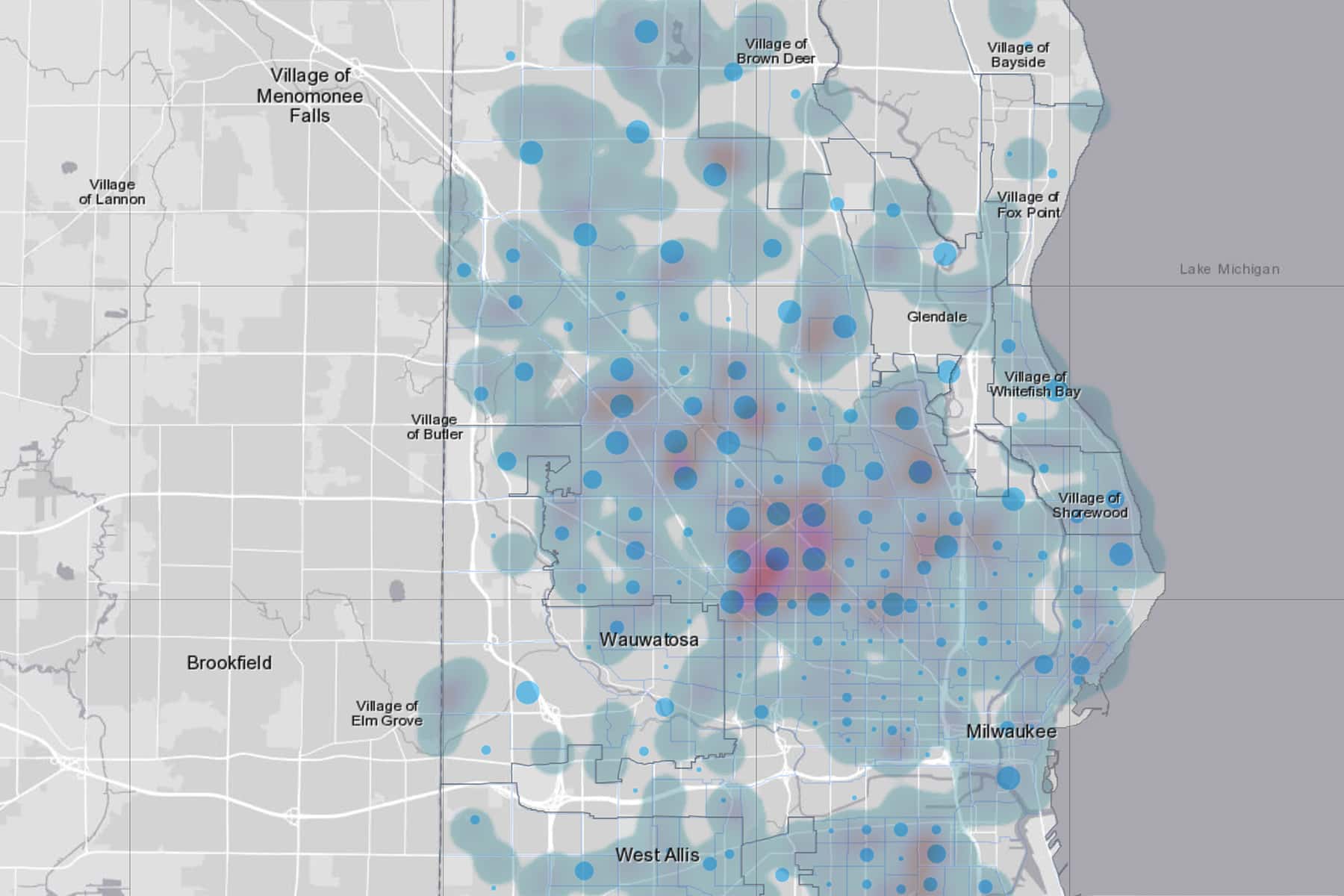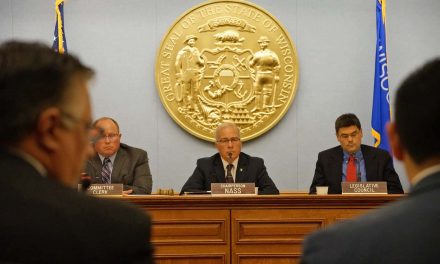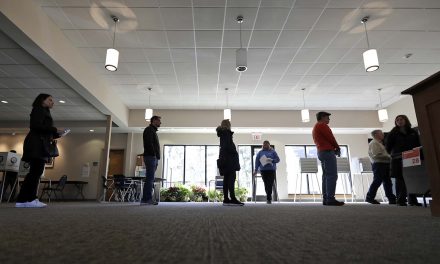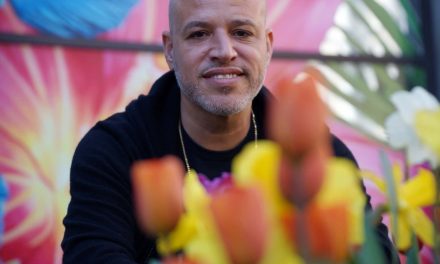
“Love and compassion are necessities, not luxuries. Without them, humanity cannot survive.”
– The Dalai Lama
“Our human compassion binds us the one to the other – not in pity or patronizingly, but as human beings who have learnt how to turn our common suffering into hope for the future.”
– Nelson Mandela
Over the past week I have had to deal with the emotions of having a good friend hospitalized with COVID-19 and now a member of my wife’s family fighting for their life. The emotional roller coaster has been harsh. For those Milwaukee County residents that have lost the battle, their families are in need of love, compassion, prayers and support.
For many these things have come naturally. As we move forward in the reality of what we do next, we should be mindful of the emotional toll of this crisis. Many people are afraid and hoping for the best moving forward. As a resident of Milwaukee for 37 of my 54 years of life, I feel the pain of our community. Seeing the first ten deaths in the county be African Americans is extremely difficult but not unforeseen.
We knew the virus was coming and we only hoped our community would not be hit harder than others. It was wishful thinking, unfortunately. As many have been shouting from rooftops, Milwaukee is the most difficult place to survive in this country as an African American. In this pandemic we are seeing the normal pattern of racial disparities playing out in Milwaukee.
As the virus continues to infect and kill we will see other communities impacted as well. This virus does not discriminate based on race or ethnicity but the past injustices and racism faced by people of color, particularly African Americans in Milwaukee that create differential health outcomes will make the virus worse in those communities. Data from the Milwaukee County Medical Examiner’s office is showing a growing number of cases on the Southside of the city over the past few days as well as continuing growth on the Northside.
There is now a brilliant tool developed to track social distancing around the country by using cell phone data. Despite what we might hope for we are hopelessly stuck having our movements tracked as we keep our phones with us all the time. Privacy issues aside, a small company called Unacast has created a database to track how well people are socially distancing using this data. According to their website they, “created this interactive Scoreboard, updated daily, to empower organizations to measure and understand the efficacy of social distancing initiatives at the local level.”
You can look at the data by states and by counties. Each place is given a score based on how much less people are moving around than they were before the outbreak. This is what their scoreboard looks like:
Using the change in average distance traveled from pre-COVID-19 days as a proxy, we determined a “Social Distancing” score for each state and county:
A: > 40% decrease
B: 30 – 40% decrease
C: 20 – 30% decrease
D: 10 – 20% decrease
F: < 10% decrease or increase
The more of a decrease in distance traveled the better the grade. I looked at the data Monday morning March 30th to see what the scores were in Wisconsin as well as Milwaukee County. The data goes back to early February and tracked through March 24. On March 16th there had been just 47 confirmed cases in the state and that grew to 457 by the 24.
Date
Monday, March 16
Saturday, March 21
Tuesday, March 24
Wisconsin
8 percent less travel (F)
40 percent less travel (B)
25 percent less travel (C)
Milwaukee County
16 percent less travel (D)
49 percent less travel (A)
29 percent less travel (C)
It is clear that where the pockets of positive COVID-19 cases predominate in the hyper-segregated metro Milwaukee area. The hotspot has been the African American parts of the city so far. This will continue to grow. As the Latino community begins to see more cases they will be the next hotspot according to current trends. White neighborhoods in Milwaukee are not immune. Those neighborhoods are beginning to see more cases as well in the past week.
The poorest communities are always going to bear the brunt of deaths caused by these types of diseases for a variety of reasons. Members of those communities tend to have more health related problems because they lacked adequate access to healthcare for many years. In the central city of Milwaukee since I moved back in the early 1990s, multiple hospitals have closed. St. Michaels and Northwest General hospitals are both places that I have received treatment during my lifetime and both are gone. We talk about food deserts a lot but not enough about healthcare deserts. We nearly lost St. Joseph’s hospital in the central city recently.
When people question why our community has been the hardest hit by COVID-19 deaths they do not know about the healthcare disparities that are part of the reason we are more susceptible to dying from this disease. Some of the underlying health conditions that negatively impact your ability to survive COVID-19 are heart disease, high blood pressure as well as diabetes and obesity. The African American community in Milwaukee has much higher rates of each of these conditions.
High blood pressure is closely related to stress. Income insecurity and low paying jobs as well as unemployment are some of the causative factors for this stress. Even for those who are not struggling financially the extreme racism so prevalent in Milwaukee causes a tremendous amount of unnecessary stress for people of color. Having lower incomes in a community with so few full-service grocery stores leads to poorer diets, and more people eating unhealthy fast foods. The convenience of unhealthy food choices is exacerbated when unemployment and underemployment rates are well above the national average leading people to make food choices based on affordability.
In 1970 African Americans in Milwaukee had a median family income that would be equivalent to nearly $50,000 in 2020 dollars. Today our median family income is less than $28,000. Only six cities had a higher median family income for African Americans in 1970. At that time our median family income was 19 percent above the national average but by 2017 it had fallen to 33 percent below the national average for African Americans.
Similarly the poverty rate in Milwaukee’s African American community in 1970 was 22 percent below the national average but ballooned to 38 percent above the national average in 2017. These shifts were related to the city losing the family-supporting wage manufacturing jobs that brought African Americans to the city beginning in large measure during WWII.
There were 118,600 of those jobs in 1967 when the African American population was about 100,000. Forty-three percent of the African Americans in the city worked in blue-collar jobs, the highest rate in the country in 1970. Today there are only about 27,000 manufacturing jobs in Milwaukee. The growth in these types of jobs has been out to the exurban counties of Waukesha, Ozaukee and Washington counties. Many city of Milwaukee residents do not have reliable transportation and cannot access those jobs.
Segregation caused intentionally by racial covenants and redlining by banks and insurance companies kept us stuck in the city. Our ranking as the most segregated metro area in the nation is still being caused by current policies and practices that keep poor people out of our suburbs. Only about 8 percent of all blacks in Milwaukee County live outside of the city of Milwaukee, a rate far lower than in any other major city in the country.
Decades of intentional segregation have left a pattern of racial disparity in its wake in the city. The national homeownership rate for African Americans in 1968 was 41.3 percent. Today it is just 42.9 percent after peaking at about 50 percent in 2005. In metro Milwaukee, the homeownership rate for Africa Americans is just 27.8 percent today. Many homes in the city are old and poorly maintained by their owners. About one half of these landlords in the city do not live in Milwaukee. Renters are exposed to lead paint, rodents, roaches, lead lateral water lines, and other environmental factors that lead to poorer health. Asthma levels have been growing for many years.
As we continue to suffer losses, it is important that we find a way to provide the emotional supports needed. It is not time to blame people for not social distancing because it is much easier said than done for many. African Americans and Latinos are much more likely to work in service sector jobs which lead to more contact with the public. Those who work in fast food restaurants, grocery stores, nursing homes and other service sector jobs are a big part of the workforce in our community. Even if they are practicing social distancing outside of work many are exposed at work.
A Facebook friend, Megan Adams, posted this about social distancing recently, “I think there are higher concentrations of essential workers in these areas, Nurses, Phlebotomists, CNA’s, RA’s and people who have to care for their neighbors grandmother, or have to keep the kids for their neighbors, or sister across the neighborhood/next door, etc. These communities tend to be more interdependent and do not have the resources to stay in their homes/practice social distancing.”
We should be aware of these issues prior to judging people. We do not need judgment today we need compassion and caring.
“A human being is a part of the whole called by us universe, a part limited in time and space. He experiences himself, his thoughts and feeling as something separated from the rest, a kind of optical delusion of his consciousness. This delusion is a kind of prison for us, restricting us to our personal desires and to affection for a few persons nearest to us. Our task must be to free ourselves from this prison by widening our circle of compassion to embrace all living creatures and the whole of nature in its beauty.” ― Albert Einstein














